John Taylor, Landscape Painter (Born 1735)
5th Great Grandfather – FFFMFFF1
Ann Jane Taylor, Robert Nurse’s wife, and my great great grandmother was a descendent of John Taylor, the Landscape Painter, so he was my 5th great grandfather.
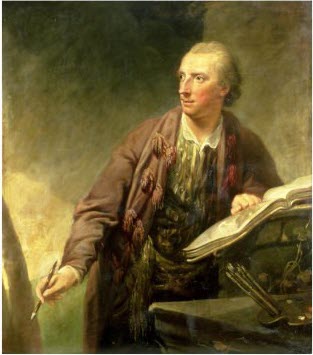
John was the only son of Abraham Taylor and Philadelphia Gordon - the daughter of Major General Patrick Gordon2, Deputy Governor and effective head of the Province of Pennsylvania from 1726 until his death in 1736. He was baptised 24th August 1735 at Christ Church, Philadeplphia.3
Although John Taylor was an artist of considerable repute during his lifetime4 - Benjamin Franklin called him the best Landscape Painter in England in a letter he wrote in 1783 complaining that all of America’s best painters went to Europe5 - very little of his early life can be learned today. We do know that he didn’t attend the Academy, of which his father was an eminent patron - at least he is not listed in the rolls. Instead, he was most likely tutored privately, probably in Philadelphia, but he may have been sent to school in England.
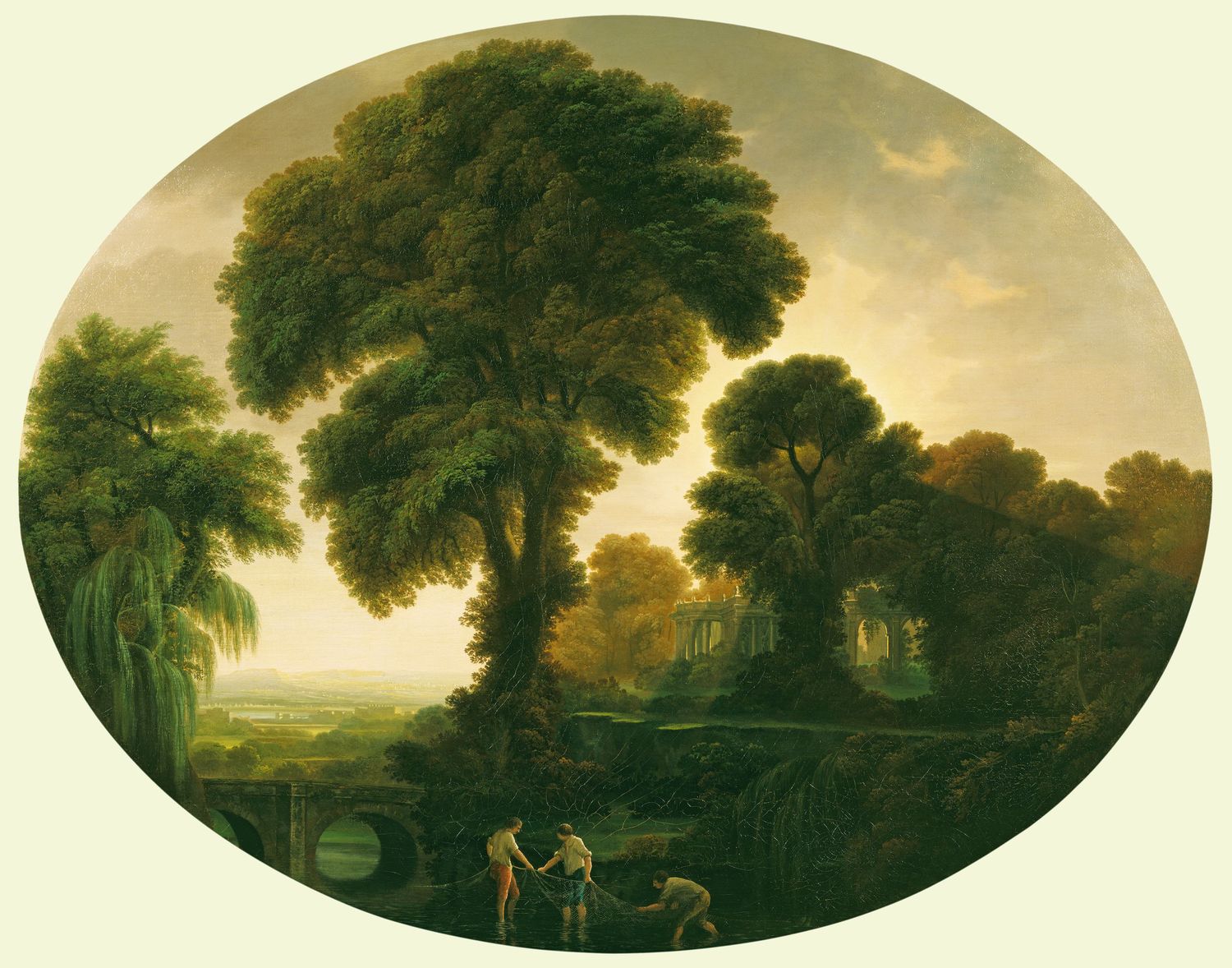
A number of his paintings are in the Royal Collection. For example Figure 2 is one of a pair of paintings that the artist gave to King George III and were hung in the Coffee Room at Kew Palace6. Figure 3 was part of a larger collection of paintings that the artists’s eldest son John Taylor gave to King George IV in 1822. It was said to have hung in Buckingham Palace in 18437.
At any rate, he was still living with his parents when they returned to England in 1762. Soon after arriving in England he married Rebecca Luther in Clifton on 4th June 1763. Whether the family settled in Bath immediately on their return from the colonies, John and his father Abraham purchased one of the new houses in the Circus (number 22) on Christmas Eve, 1766, and the family moved in soon thereafter.8 Thomas Gainsborough, another much more famous painter of that age, also lived in the Circus - at Number 17.
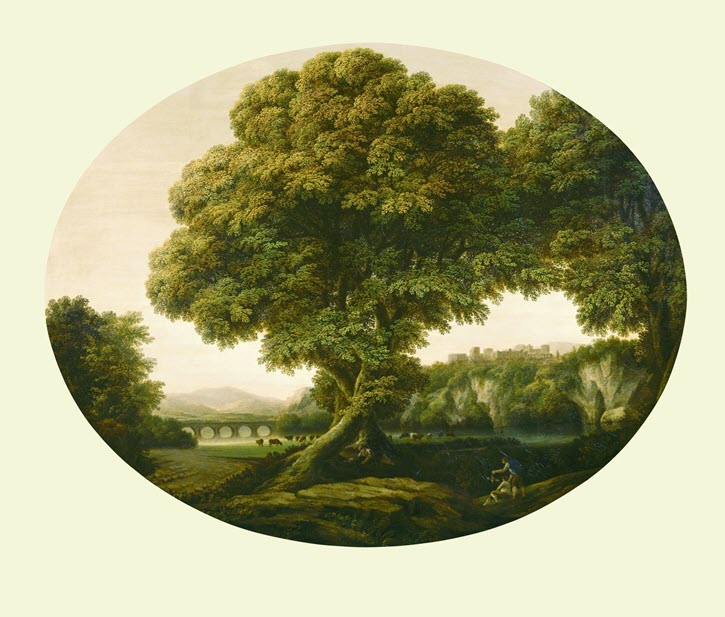
Rebecca Luther was the daughter of Richard Luther, esq. of Myles’s in Essex, and she was the last survivor of that family. Her sister Charlotte had married Henry Fane esq. of Wormsley, Essex in 1748, becoming his third wife, and after having two sons, John and Francis, died in 1758. When her brother John, who had represented the county of Essex in parliament, died she became, with her sister’s sons, co-heir of the Luther estates in Essex.
There is some confusion about John Taylor’s life during the decade of the 1760’s. This is no doubt due to the fact that there were at that time two other artists with the name John Taylor, a miniaturist and a John Taylor, actually “Old Taylor” who did Drawing at the Academy in St. Martin’s Lane.
However, he apparently lived at least part of his life in Bath and moved fairly freely in Bath’s high society. This is borne out by a number of published letters dating from that time.
Tobias Smollett, in his book Humphrey Clinker, writes through the letters from Bath of his creation, Squire Matthew Bramble:9
“In the course of coffeehouse conversation, I had often heard very extraordinary encomiums passed on the performances of Mr. T—-, a gentleman residing in this place, who paints landscapes for his amusement. As I have no great confidence in the taste and judgment of coffeehouse connoisseurs, and never received much pleasure from this type of art, those general praises made no impression at all on my curiosity; but at the request of a particular friend, I went yesterday to see the pieces, which had been so warmly commended – I must own I am no judge of painting, though very fond of pictures ………If I am not totally devoid of taste, however this gentleman of Bath is the best landscape-painter now living.”
These letters, while supposedly those of the fictitious Squire Matthew Bramble, are based on Smollett’s experiences in Bath during 1766. While John Taylor is identified by initial only, others were more explicit in identifying him. James Boswell, who was in Bath on 30th April 1776 noted in his journal:10
“Pump Room, gay. Breakfasted at Gould’s, called on Sharpe and the Sharplings. Then to John Taylor’s to see his pictures. Then to William Hoare’s.”
and Mrs. Thrale in a letter to Dr. Johnson of 28th April 1780 wrote:11
“This morning it was all connoisseurship; we went to see some pictures painted by the gentleman-artist, Mr. Taylor, of this place.”
The actor David Garrick also recorded his appreciation of John Taylor’s abilities in a poem entitled, “Upon seeing Mr. Taylor’s pictures of Bath and hearing a Connoisseur swear that ‘they were fairly painted for a gentleman’”:12
Tell me the meaning you who can,
Of “finely for a gentleman!”
Is genius, rarest gift of heaven,
To the hir’d artist only given?
Or. like the Catholic salvation,
Pal’d in for any class or station?
Is it bound ’prentice to the trade,
Which works, and as it works, is paid?
Is there no skill to build, invent,
Unless inspired by five per cent?
And shalt thou, Taylor, paint in vain,
Unless impell’d by hopes of gain?
Be wise, my friend, and take thy fee,
That Claud Loraine may yield to thee.
David Garrick, who first visited Bath in 1766 and returned occasionally in later years, appears to have been one of John Taylor’s closest friends, until the actor’s death on 20th January 177913.
The American Revolution of 1776 and the ensuing Revolutionary War would probably have caused a period of relative hardship for the Taylor family. The bulk of John Taylor’s estate, which he inherited from his father, was in investments in the American colonies. Exactly how much he was affected financially is difficult to assess, as the necessary documentation no longer exists. However, there are indications that he was concerned for his financial security.
In two letters to Benjamin Franklin in the early part of the decade, he expresses concern that land that he owned should not be forfeited to the newly independent government14,15. In one letter, dated 1st December 1782 he includes the statement: “be assur’d good Sir not a thought ever enter’d my heart which could give a shadow to suspect my warmest attachment and sincerest good wishes to that country”, the country he had left some twenty years earlier and to which, he saw it, various unavoidable circumstances had prevented his ever returning. He also put several of his paintings up for sale, no doubt in an effort to improve his financial position.
On 23rd November 1788 John Taylor, sold the house in the Circus to Mary Andre, Ann Andre and Louisa Andre and his family moved away from Bath to Grosvenor Place in the parish of St George Hanover Square, London, with the exception of his mother who stayed in Bath, where she died in 179316.
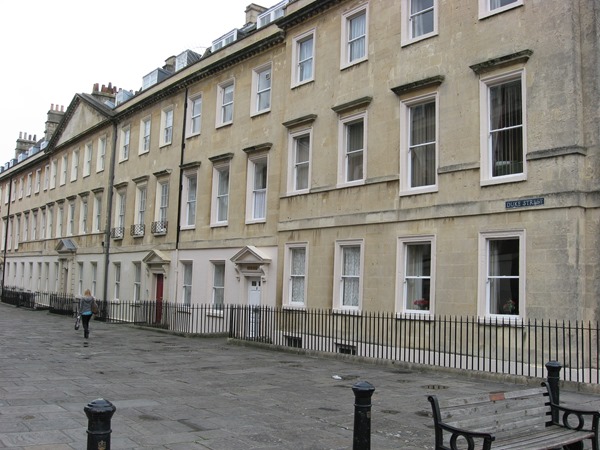
The family stayed in London until the turn of the century when they returned to Bath, where his name appears in the Bath directory. Their circumstances were not quite as good as when they previously lived in Bath, as they moved into 4 Duke Street, which while a decent townhouse, was nowhere near as “fancy” as the Circus.
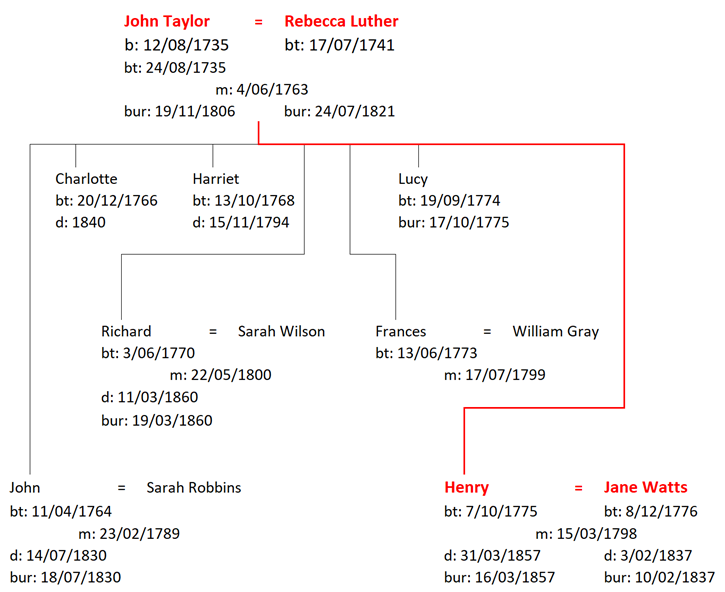
John and Rebecca had seven children, three sons – John, Richard and Henry – and four daughters Harriott, Charlotte, Frances and Lucy. All their children were baptised at St Swithen, Walcot, John the eldest on 11th April 176417, Charlotte on 20th December 176618, Harriett on 13th October 176819, Richard on 3rd June 177020, Frances (or Fanny) on 13th June 177321, Lucy on 19th Sep 177422 and Henry, the youngest, my direct ancestor, on 7th October 177523.
Two of the girls died quite young, Lucy as an infant of just over 12 months old and Harriet, at the age of 25. When Harriett died in 1794, she left a sum of money to each of her brothers and sisters still living naming them explicitly in her will.
Her father wrote “An Elegy On the Death of a … Daughter”. 20 copies were printed and bound, all of which were signed by her father. I have a reprint of the publication, which was signed by the author but also by John’s grandaughter - Anne Fane Stallard, the daughter of his oldest son John.24
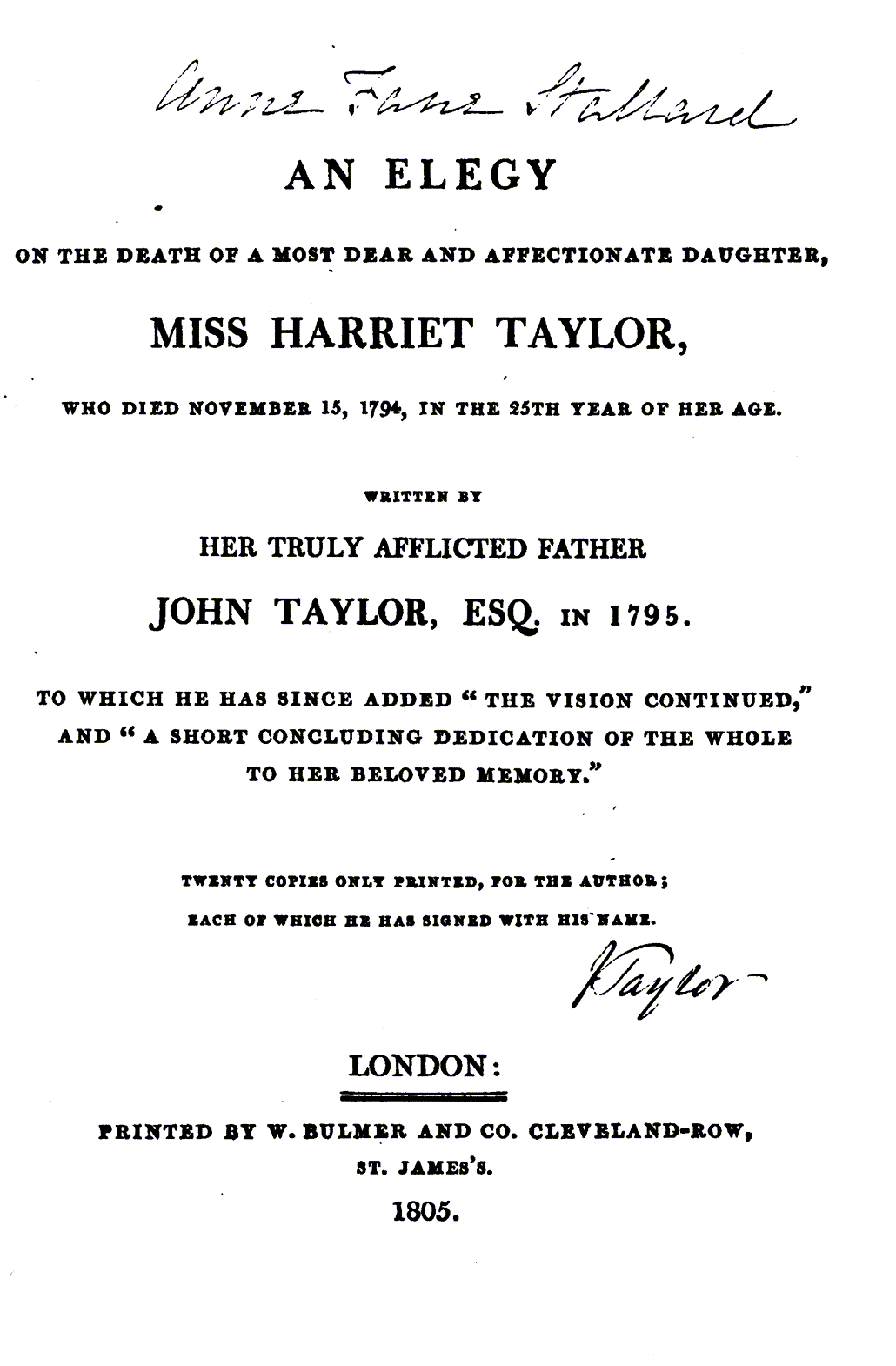
Apparently, two of John and Rebecca’s sons became physicians, although there are no records of their education. The eldest son, John practiced primarily in Dorset, while Richard practiced in Bath.25 John inherited from his maternal grandfather, Richard Luther, the estate of Vicar’s Hill, near Boldre in Hampshire, together with a half share in the Alderton Hall and Hinton Hall estates in Suffolk.26
John (the son) was also adopted by his maternal uncle, John Luther, but after a dispute with his uncle, John Luther having no children of his own bequeathed most of the Luther estates to the children of his other sister, Charlotte, i.e. Francis and John Fane.27
John Taylor died at his residence in Bath on 8th November, 1806, at the age of 72, and his death was recorded in a Bath paper of the day28.
“On Saturday died at his house in this city John Taylor, esq. Upon subjects of science and literature few men were better informed, but his excellence as a landscape painter will long be known to the world, from the beautiful engravings taken from some of his celebrated pictures. His house in this city, some years since, was resorted to by all persons distinguished for talent and genius.”
His wife Rebecca, died 15 years later in 1821, and both of them are buried at the parish of Newton St Loe just to the west of Bath.29,30
Both John31 and Rebecca32 left wills where they identify and give gifts of some kind to all of their surviving children.
References
Benjamin Franklin, 1706-1790. 1906. The Writings of Benjamin Franklin. Edited by Albert Henry Smyth. Vol. 9. London: The MacMillan Company. https://archive.org/details/writingsofbenjam09franuoft/page/n8/mode/1up.
Burke, John. 1838. A Genealogical and Heraldic History of the Commoners of Great Britain and Ireland. London: Henry Colburn. https://archive.org/details/genealogicalhera04burk/page/n6/mode/1up.
Chapman, Sydney T. 2009. “Major John André and No. 22, the Circus, Bath.” ’The Survey of Bath and District 24: 50–51. https://archive.org/details/MajorJohnAndrAndNo.22TheCircusBath.
David Garrick, 1717-1779. 1968. The Poetical Works of David Garrick. Vol. 2. New York/London: Benjamin Blom. https://archive.org/details/poeticalworks0002garr/page/n6/mode/1up.
“England & Wales, Prerogative Court of Canterbury Wills, 1384-1858.” 2013. Ancestry.com. 2013. https://www.ancestry.co.uk/search/collections/5111/.
Hildeburn, Charles Swift Riche. 1894. Records of Christ Church, Philadelphia. Baptisms, 1709-1760. Philadelphia, Pennsylvania. https://archive.org/details/recordsofchristc00phil/mode/1up.
James Boswell, 1740-1795. 1904. Boswell’s Life of Johnson. Vol. 2. London, Edinburgh, Glasgow, New York; Toronto: Henry Frowde. https://archive.org/details/boswellslifeofjo0002bosw/page/n6/mode/1up.
Keith, Charles Penrose. 1917. Chronicles of Pennsylvania from the English Revolution to the Peace of Aix-La-Chapelle, 1688-1748. Vol. 2. Philadelphia, Pennsylvania: Patterson; White, Co. https://archive.org/details/chroniclesofpenn02keituoft/page/n3/mode/1up.
Little, David M., and George M. Kahrl, eds. 1963. The Letters of David Garrick. Vol. 2. Cambridge, Massachussetts: Belknap Press, Harvard University Press. https://archive.org/details/letters0002garr/page/n8/mode/1up.
Marks, Arthur S. 1978. The American Art Journal 10 (2): 81–96. https://www.jstor.org/stable/1594087.
Scott, Geoffrey, and Frederick A. Pottle, eds. 1929-1936. Private Papers of James Boswell from Malahide Castle. Vol. 11. New York.
“Somerset, England, Church of England Baptisms, Marriages, and Burials, 1531-1812.” 2016. Ancestry.com. 2016. https://www.ancestry.co.uk/search/collections/60856/.
Taylor, John, ed. 1805. An Elegy on the Death of a Most Dear and Affectionate Daughter. London: Bulmer; Co, St James’s.
Tobias Smollett, 1721-1771. 1904. The Expedition of Humphrey Clinker. New York Century. https://archive.org/details/expeditionofhu00smol/mode/1up.
Footnotes
-
When showing relationships F means Father, M means Mother, U means Uncle and A means Aunt. So FFM is my father’s father’s mother, and FFMU is my father’s father’s mother’s uncle.↩
-
see (Keith 1917), p. 686.↩
-
see (Hildeburn 1894), p. 90.↩
-
see (Marks 1978) for a biography of John Taylor.↩
-
Benjamin Franklin wrote in a reply to the Dutch Painter Jan Ingenhousz, who had written to him regarding the opportunities for employment in the newly independent United States - “Our geniuses all go to Europe. In England at present, the best History Painter, West; the best Portrait Painter, Copley; and the best Landscape Painter, Taylor, at Bath are all American.” see (Benjamin Franklin 1906, 9:45)↩
-
see Classical Landscape with Fishermen Signed and dated 1770↩
-
see (Chapman 2009)↩
-
see (Tobias Smollett 1904) p. 77.↩
-
see (Scott and Pottle 1929-1936), p. 267.↩
-
see (James Boswell 1904), p. 319.↩
-
see (David Garrick 1968), p. 516.↩
-
A number of letters between John Taylor and David Garrick have been published, and they demonstrate a deep friendship between the two men. see (Little and Kahrl 1963) p. 813 and p. 878↩
-
To Benjamin Franklin from John Taylor, 2 February 1780 .↩
-
To Benjamin Franklin from John Taylor, 1 December 1782↩
-
see (Chapman 2009)↩
-
The Parish Register of St Swithen, Walcot, Bath, see (“Somerset, England, Church of England Baptisms, Marriages, and Burials, 1531-1812” 2016), D/p/wal.sw/2/1/5, p. 71.↩
-
The Parish Register of St Swithen, Walcot, Bath, see (“Somerset, England, Church of England Baptisms, Marriages, and Burials, 1531-1812” 2016), D/p/wal.sw/2/1/5, p. 82.↩
-
The Parish Register of St Swithen, Walcot, Bath, see (“Somerset, England, Church of England Baptisms, Marriages, and Burials, 1531-1812” 2016), D/p/wal.sw/2/1/5, p. 93.↩
-
The Parish Register of St Swithen, Walcot, Bath, see (“Somerset, England, Church of England Baptisms, Marriages, and Burials, 1531-1812” 2016), D/p/wal.sw/2/1/5, p. 108↩
-
The Parish Register of St Swithen, Walcot, Bath, see (“Somerset, England, Church of England Baptisms, Marriages, and Burials, 1531-1812” 2016), D/p/wal.sw/2/1/9, p. 11↩
-
The Parish Register of St Swithen, Walcot, Bath, see (“Somerset, England, Church of England Baptisms, Marriages, and Burials, 1531-1812” 2016), D/p/wal.sw/2/1/9, p. 21↩
-
The Parish Register of St Swithen, Walcot, Bath, see (“Somerset, England, Church of England Baptisms, Marriages, and Burials, 1531-1812” 2016), D/p/wal.sw/2/1/9, p. 30↩
-
see (Taylor 1805).↩
-
Richard Taylor, M.D. lived for some time at 40 Green Park, Bath.↩
-
The Will of Richard Luther, dated 21 December 1767; see (“England & Wales, Prerogative Court of Canterbury Wills, 1384-1858” 2013), PROB 11, 935, p. 178.↩
-
see (Burke 1838), p. 7.↩
-
see (Burke 1838), p. 7.↩
-
Parish Register of Holy Trinity, Newton St Loe, Somerset, see (“Somerset, England, Church of England Baptisms, Marriages, and Burials, 1531-1812” 2016), D/p/new.s.l/2/1/3, p. 17.↩
-
Burial Register of Holy Trinity, Newton St Loe, Somerset, see (“Somerset, England, Church of England Baptisms, Marriages, and Burials, 1531-1812” 2016), D/p/new.s.l/2/1/7, p. 16.↩
-
The Will of John Taylor, dated 19 April 1806; see (“England & Wales, Prerogative Court of Canterbury Wills, 1384-1858” 2013), PROB 11, 1453, p. 361.↩
-
The Will of Rebecca Taylor, dated 6 February 1810; see (“England & Wales, Prerogative Court of Canterbury Wills, 1384-1858” 2013), PROB 11, 1647, p. 296.↩